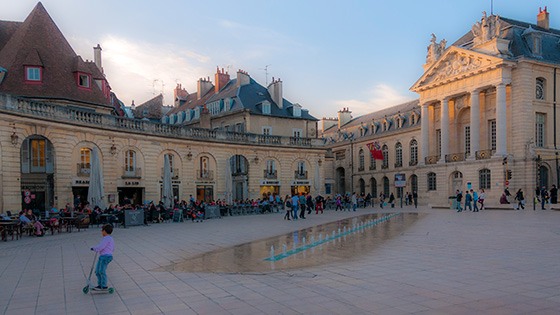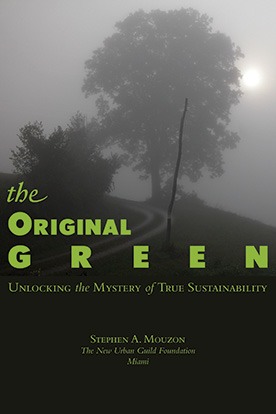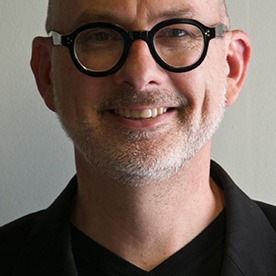search the Original Green Blog

The neighborhoods and subdivisions that make up our towns and cities can be very generous, but they can also be really stingy as well, and their generosity is a great barometer of their prosperity and a good prognosis of their long-term prospects. A typical subdivision is miserly, selfishly cutting up every scrap of available land for sale under the mistaken assumption that this will make more money for the developer, but this is a half-baked view even in the short term. Here's why:

You can give land back to a neighborhood in several good ways and one bad way. First the bad news: amorphous left-over "green space," especially when it's located behind the houses in a thoughtless manner, really does waste land because it creates so little value. Now the good news: if you design the open space as parks, greens, squares, plazas, and playgrounds, and if you put them in front of the houses rather than behind, you can create a great deal of value.
A long view across a space significantly wider than a street increases the real estate value of all buildings facing the long view, usually by 25% or more. Turn the fronts of the houses to the view with a street (or occasionally a walk) running between the houses and the view, and you carry that value up to two blocks deep into the adjacent urbanism because those people can walk to the long view as well.
That increase in real estate value can almost immediately pay for the land given up for parks, greens, squares, plazas, and parks. Over the long term, as the neighborhood is built out, it builds a reputation of being one of the more desirable places in town, cementing the resilience of that value. These principles apply both to new neighborhood design and also to sprawl recovery. Two caveat about fronting the view:

• The front of a building is usually a lot better-looking than the back because designers spend more effort and builders spend more money composing the front of the building. Buildings that turn their back on a view (like almost every golf course subdivision built since World War II) exemplify what I call "mooning the view." If you're on the golf course or in the park, it simply doesn't look as good when you're getting mooned.
• The more eyes you can put on the view, the more value you're likely to create. It's OK to have large detached houses around a park if it's in a less urban part of town, but for the greens and especially the squares and plazas, you really should consider townhouses or even condos in the more urban parts of town.

Here's a curious thing: I started thinking about generosity while working on my upcoming book New Media for Designers + Builders. For over 200 years, business has operated on the three prime virtues of quality, speed, and economy (or better-faster-cheaper.) But things are changing now, as we can see all around us. I believe that in the Age of the Idea that is now dawning, the three primary virtues of sustainable businesses will be patience, generosity, and connectedness.
But something strange happened. As I was writing, it became clear that Original Green places are built on exactly these virtues as well, as we discussed earlier. The next few posts will look at other ways that sustainable architecture and urbanism is built on these virtues. And I've undoubtedly forgotten lots of things… how are the best ways you've seen of architecture and urbanism being patient? Generous? Connected?
~Steve Mouzon
Legacy Comments
Steve Mouzon · Board Member at Sky Institute for the Future
Giving back can lead to getting more in the end... even in city planning. Please have a look... what do you think?
Daniel DeAngelo · Works at Town Planner/Building Designer
Love the ideas here of Patient Generous Connected. A nice, poetic way to think of it. My only small critique would be: Are there more images of American cities that could be used to illustrate this principle? We all love European cities, and New Orleans is practically a Caribbean city. Would images of Savannah squares, Rittenhouse square in Philiadelphia, or Louisburg Square in Boston be more applicable? Also, are there any worthy examples incorporating modern/contemporary architecture?
Thomas Rosman · Owner/Associate Broker at One South Realty Group
great article
Valentin Hadelich · Head of Department (HOD) at ECE Projektmanagement G.m.b.H. & Co. KG
Hi Steve, nice Article. I must come back to your blog more often.
I agree with Daniel though, the images show some of "the" best prectice places (Orte, I don't know the translation for that). A "apartments overlooking a plaza" is kind of an understatement for the Piazza Navona!
Looking forward to your next entries!
Laurence Qamar · Principal (school) at Laurence Qamar, Architecture & Town Planning
Agreed! A developer will generally make higher sales figures by selling less square footage of real estate, and amenitizing those parcels with well designed public places. At Seabrook (www.seabrookwa.com) we created active parks and plazas both in the center of the neighborhoods and interlaced around the edges as esplanades on bluffs overlooking the Pacific and forested trails along forested streams. This dedication of more than a third of the land to publicly accessible squares, parks and linear greenways has tremendously increased the value of the real estate by both connecting people to the natural amenities at the edges, and connecting people to one another in the central parks and squares.
Hazel Borys · Managing Principal at PlaceMakers
Always enjoy the discussion of prime virtues, particularly those required for resilient business today: patience, generosity, and connectedness.
Roland Beinert · University of Idaho
Great article. What about streetscapes? After all streets are the most common public space in any city. Is there any statistic on how much value street trees, parklets and other street-based amenities might add to a neighborhood? How would a neighborhood with Dutch woonerfs compare to a neighborhood with only normal car-oriented streets, I wonder?
Avwaruroro Alfred · Yaba College of Technology.yaba
Practical piece
959+


